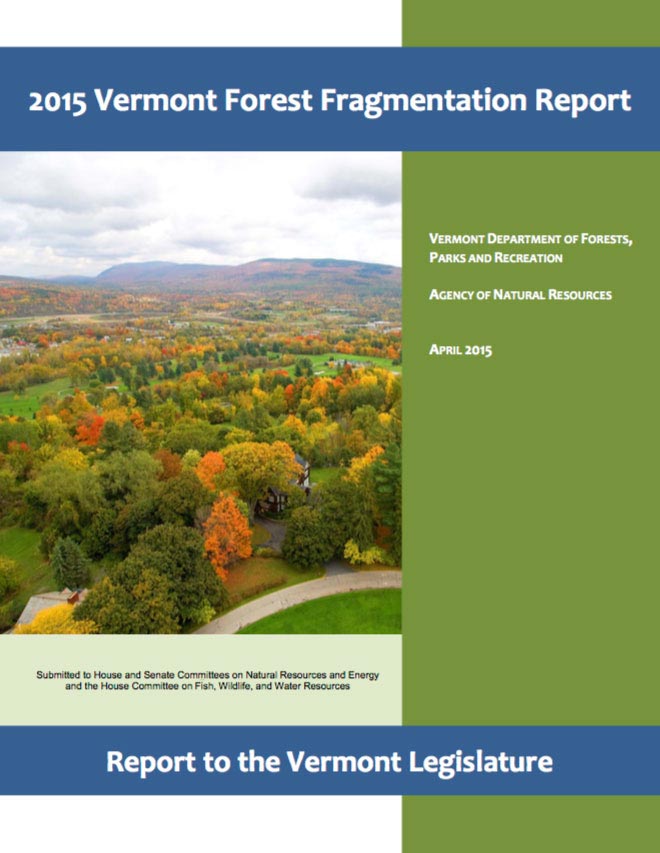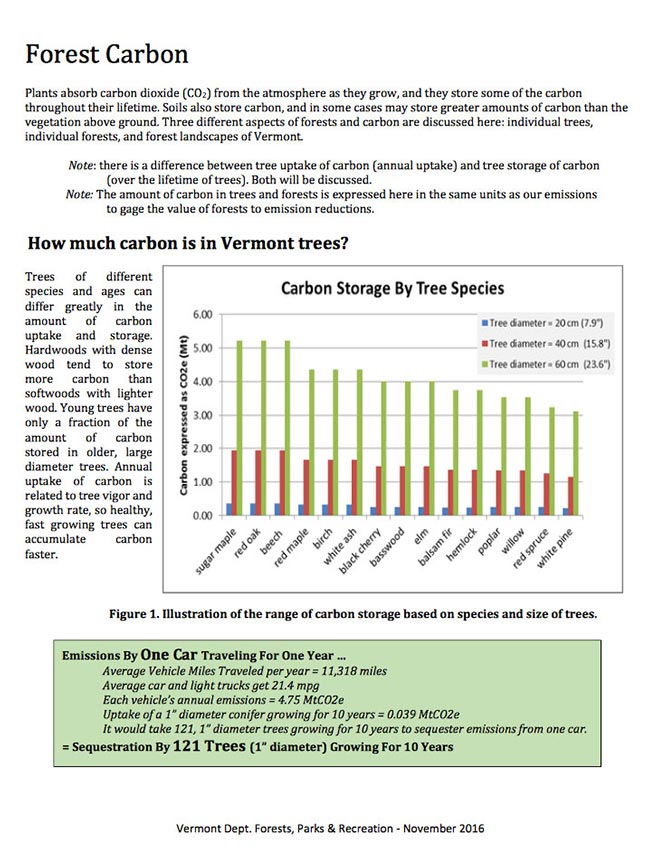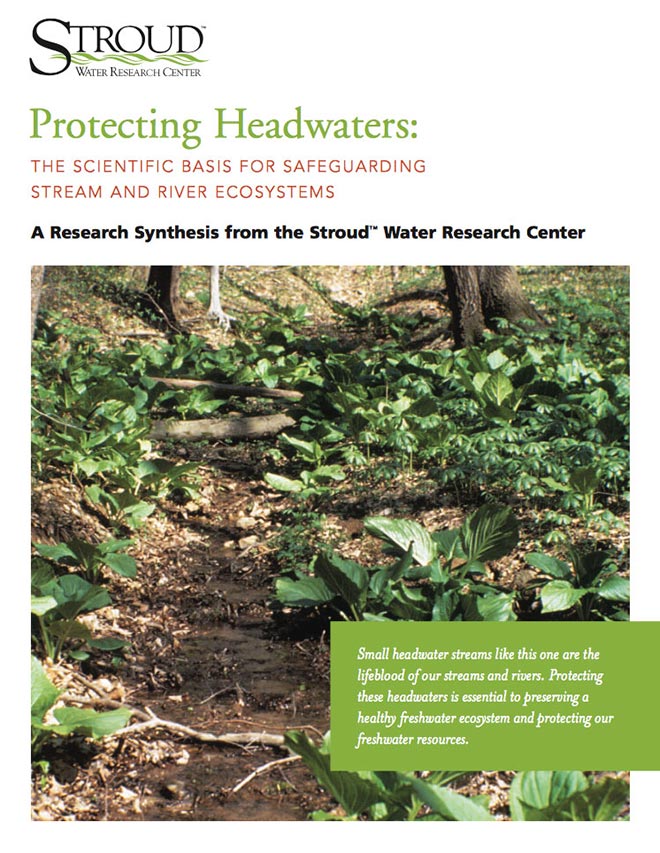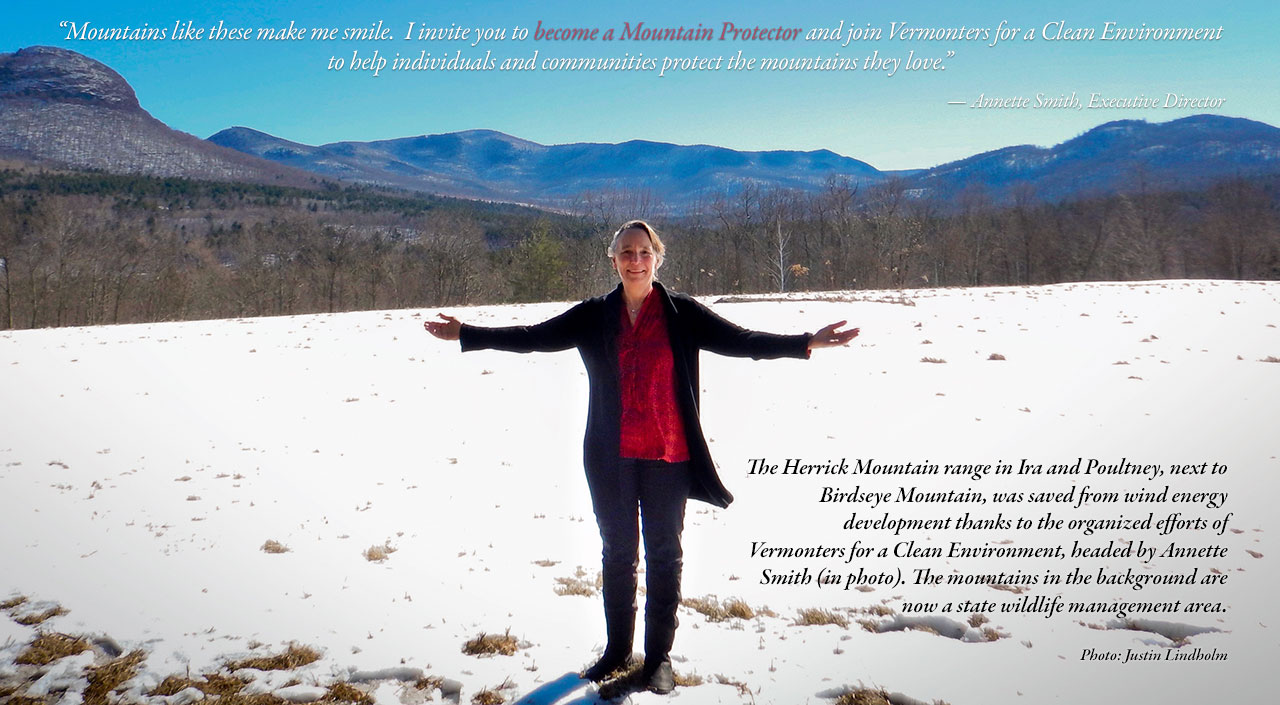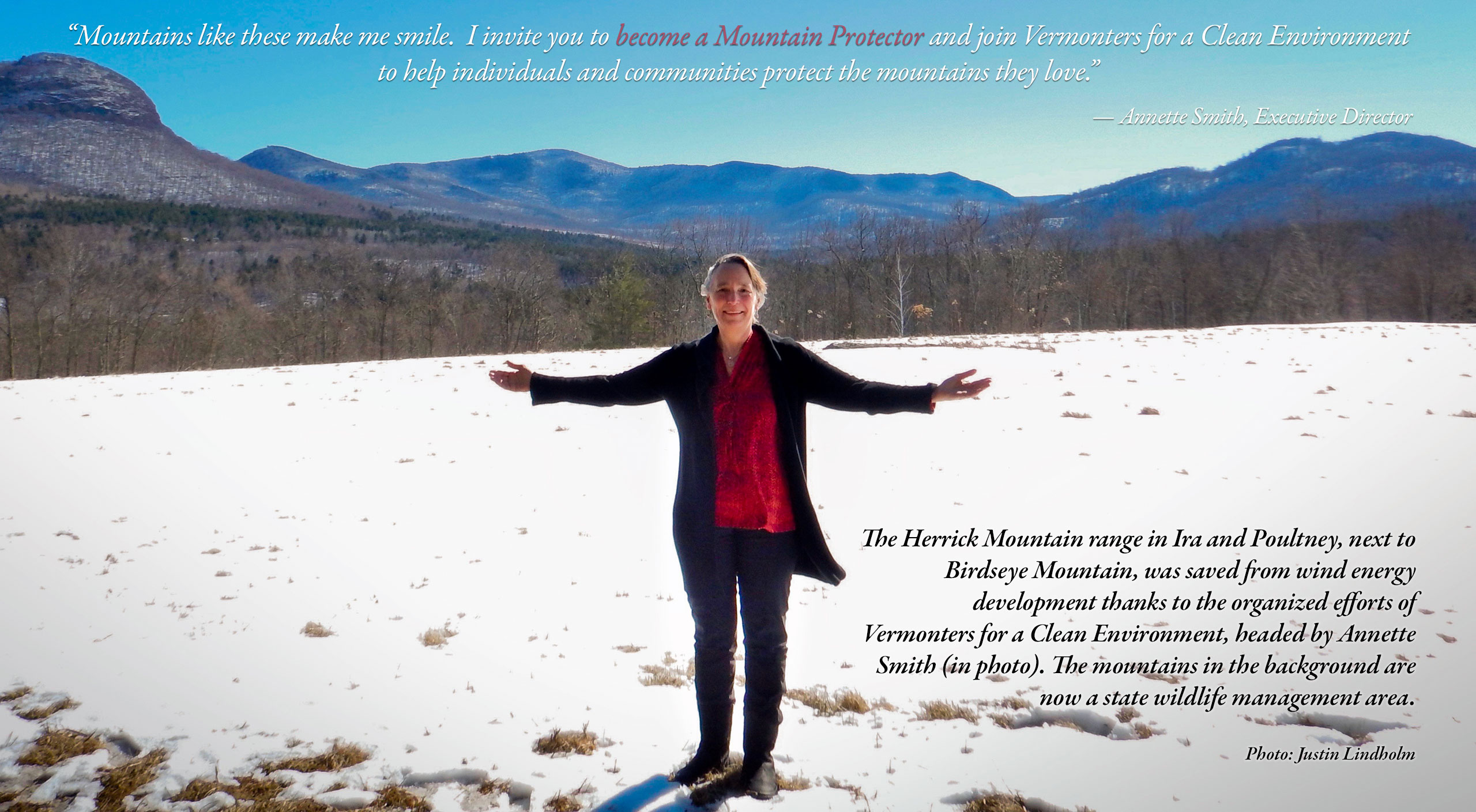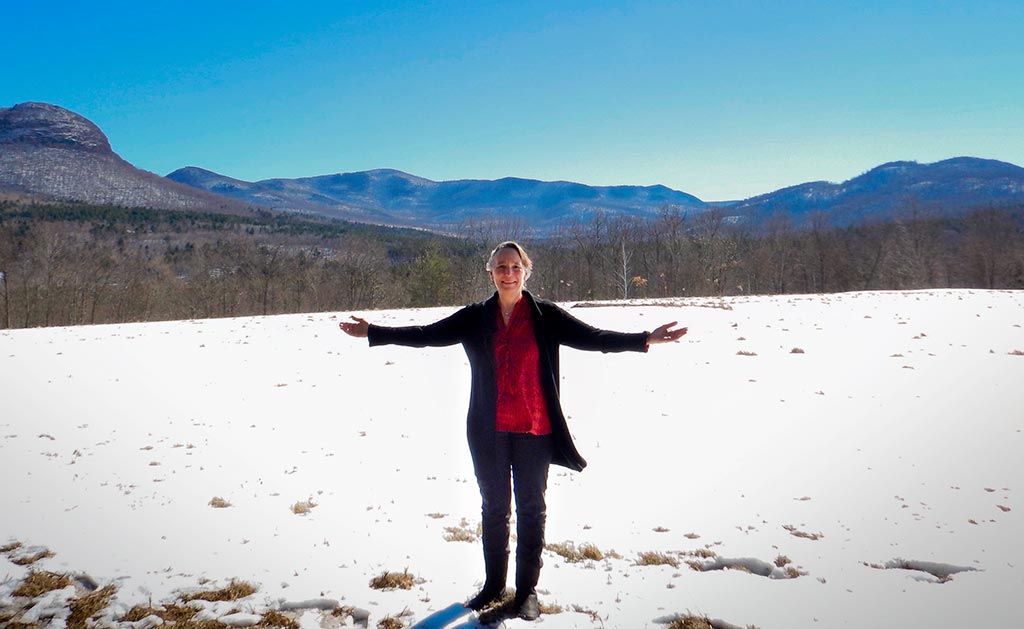First Known When Lost:
A Cautionary Tale
“Humpty Dumpty sat on a wall,
Humpty Dumpty had a great fall.
All the king’s horses and all the king’s men
Couldn’t put Humpty together again.”
The grim, slow motion death of our mountain ecosystems has begun. The damage we already have done will outlive us, well beyond the proverbial seventh generation. The destruction will long outlast the temporary usefulness of the wind turbines whose blink-blink-blinking red eyes will compete for our attention with the nighttime stars. When will it end, and where?
English writer Edward Thomas was a great friend of Robert Frost, and in 1914, the two chums rambled the English countryside together. Frost would soon return to America and fame; in 1917, his friend would meet death on a battlefield in France. Before he died, however, Thomas bequeathed us a remarkable poem, a cautionary tale about taking for granted that which we see everyday and often overlook. It is a lesson we need to learn. Thomas’ First Known When Lost begins:
I never had noticed it until
‘Twas gone, – the narrow copse
Where now the woodman lops
The last of the willows with his bill.
It was not more than a hedge overgrown.
One meadow’s breadth away
I passed it day by day.
Now the soil is bare as bone ….
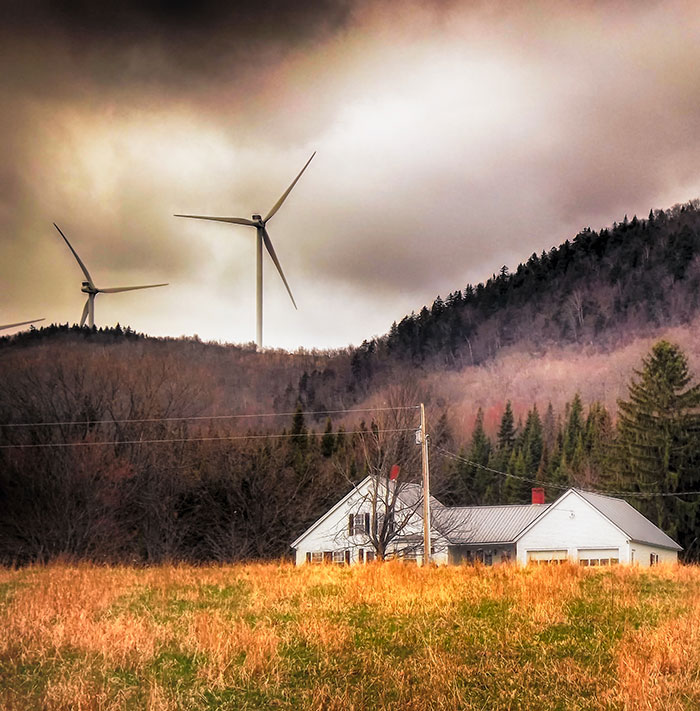
Not Vermont Life! The former Nelson farm, Lowell, Vermont.
T-Rex wind turbines approach on the horizon.
Photo: Mike Nelson.

Not Vermont Life! The former Nelson farm, Lowell, Vermont.
T-Rex wind turbines approach on the horizon.
Photo: Mike Nelson.
First Known When Lost: A Cautionary Tale
“Humpty Dumpty sat on a wall,
Humpty Dumpty had a great fall.
All the king’s horses and all the king’s men
Couldn’t put Humpty together again.”
The grim, slow motion death of our mountain ecosystems has begun. The damage we already have done will outlive us, well beyond the proverbial seventh generation. The destruction will long outlast the temporary usefulness of the wind turbines whose blink-blink-blinking red eyes will compete for our attention with the nighttime stars. When will it end, and where?
English writer Edward Thomas was a great friend of Robert Frost, and in 1914, the two chums rambled the English countryside together. Frost would soon return to America and fame; in 1917, his friend would meet death on a battlefield in France. Before he died, however, Thomas bequeathed us a remarkable poem, a cautionary tale about taking for granted that which we see everyday and often overlook. It is a lesson we need to learn. Thomas’ First Known When Lost begins:
I never had noticed it until
‘Twas gone, – the narrow copse
Where now the woodman lops
The last of the willows with his bill.
It was not more than a hedge overgrown.
One meadow’s breadth away
I passed it day by day.
Now the soil is bare as bone ….
Likewise, once a mountainside has been pulverized and crushed for wind turbines, there is little soil left on the site. It is predominantly blasted rock with lots of fine materials that forever erode and wash down the mountain. We will have exchanged the leafy, water-retaining forests for the sluiceway of a road. We will have transformed a sponge into a rock.
Don’t say, “We weren’t warned.” We were. George Perkins Marsh, in his 1847 Rutland speech, schooled Vermonters on the fundamental interrelationships of mountains, forests and water. Later, a more recent prophet, Governor Deane Davis, emphasized the special value of upper-elevation streams, pledging in 1971 “to give as near complete protection to what we call the pristine streams — those streams that are above elevations of 1500 ft., where the streams are clean and unpolluted.”
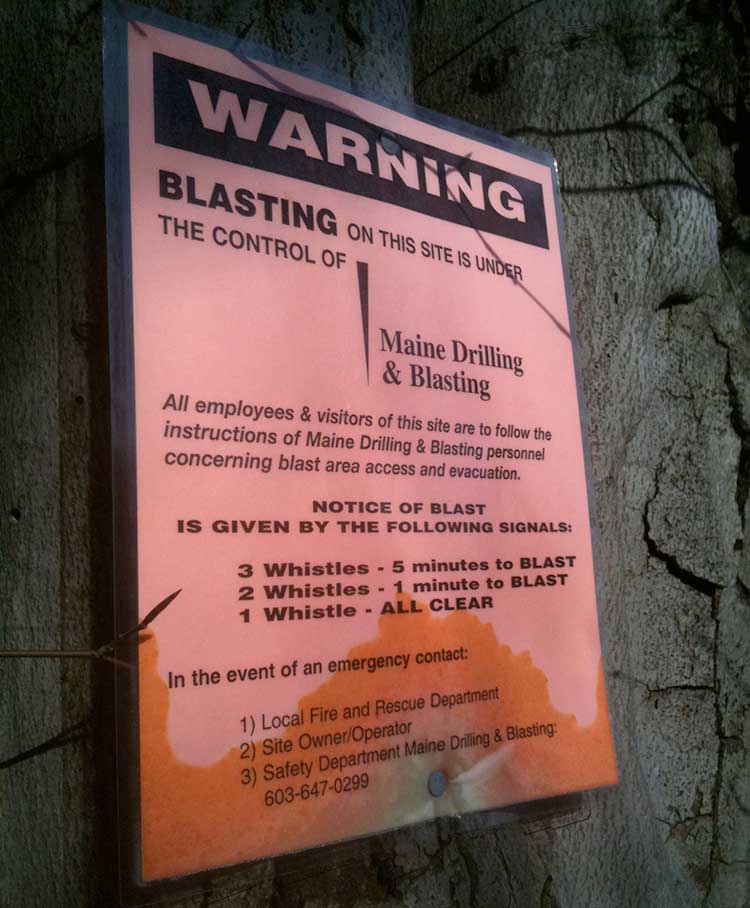
What was true then is true today. No amount of “mitigation” or promises by profiteers and politicians will ever make up for the follies of humankind.
Vermont has made too easy a peace with both large-scale development and the destruction it often entails. The euphemistic “working landscape” pardons a multitude of environmental sins: Mountaintops are scalped for industrial wind; ski areas metastasize into high-priced subdivisions and amusement parks; Lake Champlain, our “Great Lake,” turns green from agricultural and urban run-off.
Who then can lead us? In Travels with Charley, John Steinbeck marveled at the wisdom and strength of desert people, who had learned to live in a harsh and austere environment. They could show humans the way out of the war against themselves, and the desert might become “the last stand of life against no life.” The desert, according to Steinbeck, could mother magic things.
So might it be for the mountains, never easy places to live. Our mountain people, “uphill Vermonters” far from the pavilions of power, might be the ones to lead Vermont away from this madness. Let us hope we might say of our dear little state among the dark green hills, “The mountains have mothered magic things before this.”
We need that magic. Let us be magicians together!
The Children of Darkness and the Children of Light: Above: blasting notice. Below: a mountain protector. A warning of destruction and a harbinger of hope.
Photos: Bruce S. Post and Vermonters for a Clean Environment, respectively.
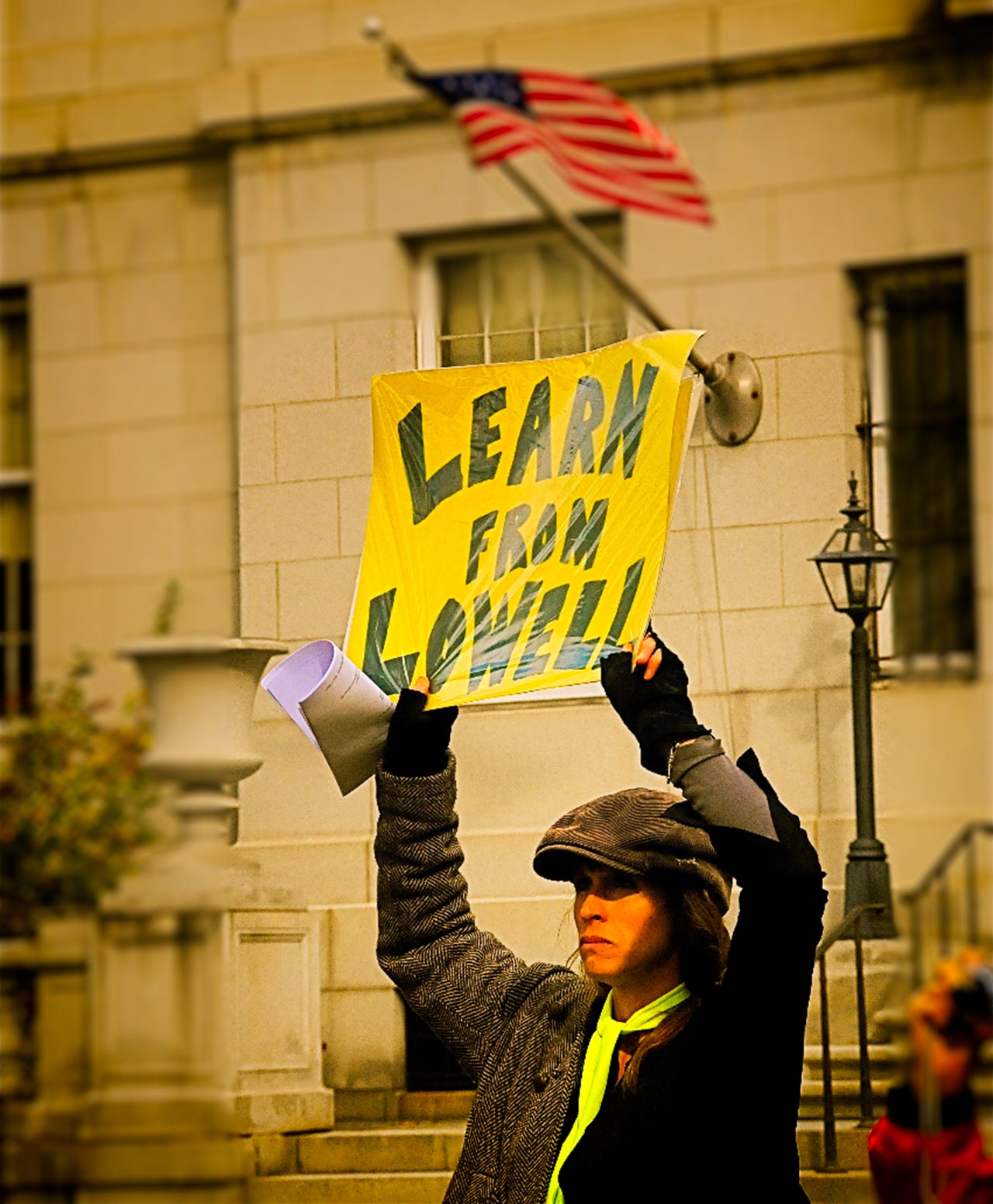
BECOME A MOUNTAIN PROTECTOR
1. Support The Mountain Manifesto and post photos of the mountains you want to protect.
2. Call for a stop to wind installations in the mountains.
3. Push for enhanced environmental protection for Vermont’s mountains.
4. Demand reform of Vermont’s stacked deck against the common people.
5. Learn more about the relationships between mountains, forests, watersheds and ecosystems. (See below.)
6. Join other protectors of the Green Mountains by supporting Vermonters for a Clean Environment.
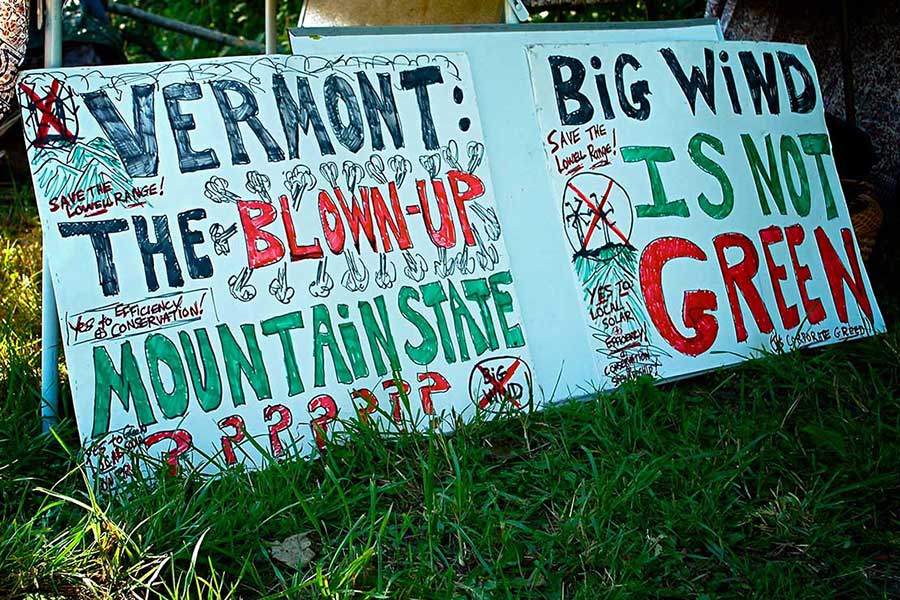
Photo: Bruce S. Post.
1. Support The Mountain Manifesto and post photos of the mountains you want to protect.
2. Call for a stop to wind installations in the mountains.
3. Push for enhanced environmental protection for Vermont’s mountains.
4. Demand reform of Vermont’s stacked deck against the common people.
5. Learn more about the relationships between mountains, forests, watersheds and ecosystems. (See below.)
6. Join other protectors of the Green Mountains by supporting Vermonters for a Clean Environment.

Photo: Bruce S. Post.
1. Support The Mountain Manifesto and post photos of the mountains you want to protect.
2. Call for a stop to wind installations in the mountains.
3. Push for enhanced environmental protection for Vermont’s mountains.
4. Demand reform of Vermont’s stacked deck against the common people.
5. Learn more about the relationships between mountains, forests, watersheds and ecosystems. (See below.)
6. Join other protectors of the Green Mountains by supporting Vermonters for a Clean Environment.

Photo: Bruce S. Post.
LEARN MORE ABOUT …
How forests protect us from floods, provide clean water, filter air pollution, help mitigate climate change, safe-guard habitat and biological diversity.
What forests do to buffer climate change and why expanding areas of healthy forests will maximize carbon uptake and storage more than any other land use.
Why consequences flow downhill, from mountaintops and headwaters to valleys, streams, rivers and lakes. Headwaters preserve the health of entire freshwater ecosystems – and the lives that inhabit them.
Link: Science behind headwaters.
Photo: Justin Lindholm
The Herrick Mountain range in Ira, next to Birdseye Mountain, was saved from wind energy development. Thanks to the organized efforts of Vermonters for a Clean Environment, these lands are now a state wildlife management area.
“Mountains like these make me smile. I invite you to become a Mountain Protector and join Vermonters for a Clean Environment to help individuals and communities protect the mountains they love.”
— Annette Smith, Executive Director
